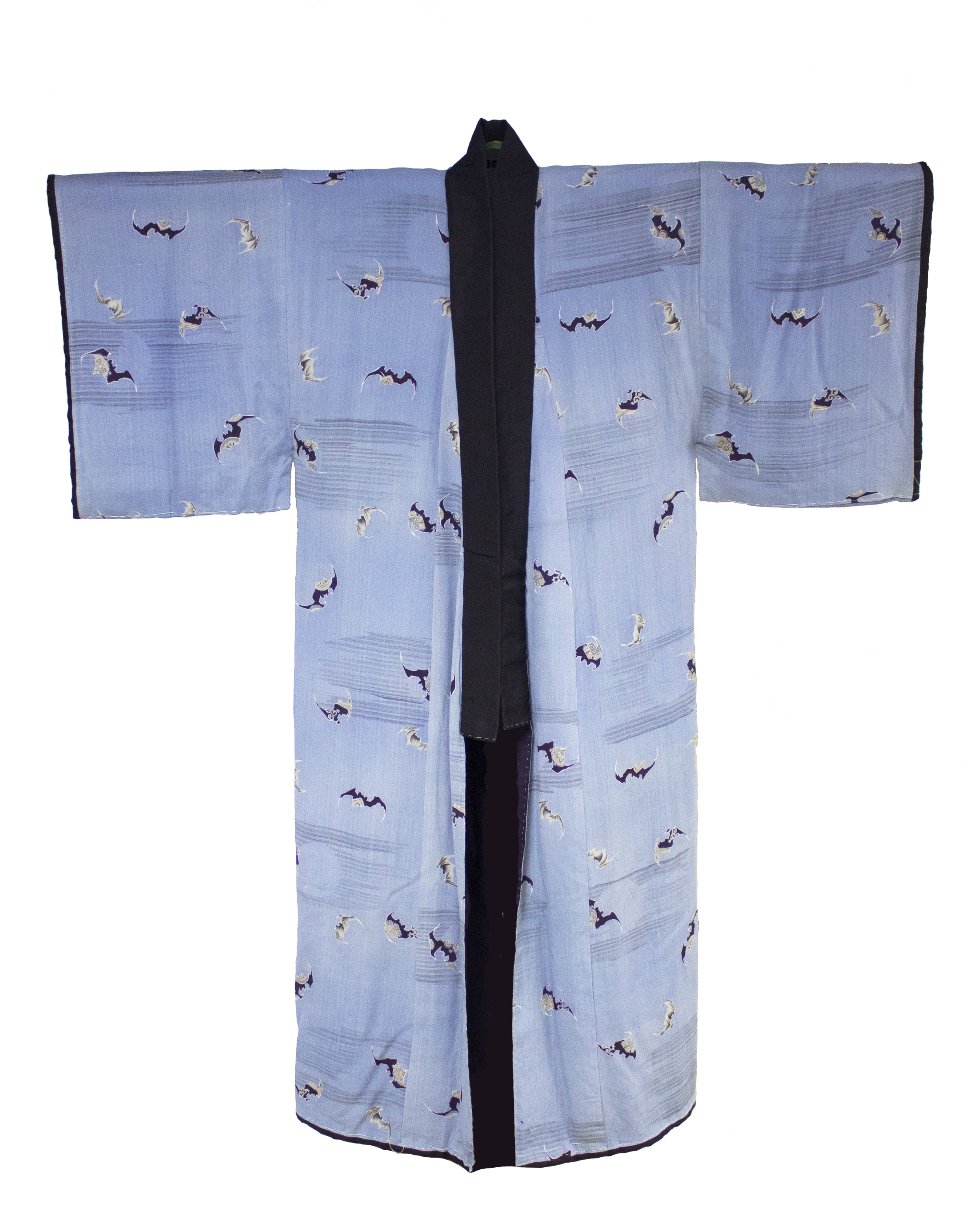|
Acquired by Charles Longfellow during his lengthy trip to Japan from 1871 to 1873, this kimono dates to the mid-19th century. Made of silk, the design features numerous small bats depicted in flight with clouds, represented by slightly darker blue horizontal lines, and a faint full moon in the background. Although a kimono decorated with bats might at first glance seem like an appropriate garment for the Halloween season, before the 20th century the bat was regarded by Japanese culture in a much different manner than it was in the western world. Due in part at least to their nocturnal nature, bats in European and North American cultures have long been interpreted as ill omens, or even as a representation of black magic, the devil, or the underworld, and bats are now one of the most common themes for Halloween decorations. Japan though, likely as a result of Chinese influence, saw the bat as a symbol of good luck. The Chinese character for happiness has the same sound as the character for bat, so the two became associated with each other and that association carried over to Japan. For hundreds of years in Japan bats were a fairly common design motif used in prints, on china, on wallpaper and on clothing such as this kimono. |
|
November 01, 2017
|
Last updated: November 1, 2017

 In the spirit of the season this month’s featured object is a Japanese kimono depicting bats flitting around a moonlit and cloudy night sky.
In the spirit of the season this month’s featured object is a Japanese kimono depicting bats flitting around a moonlit and cloudy night sky.